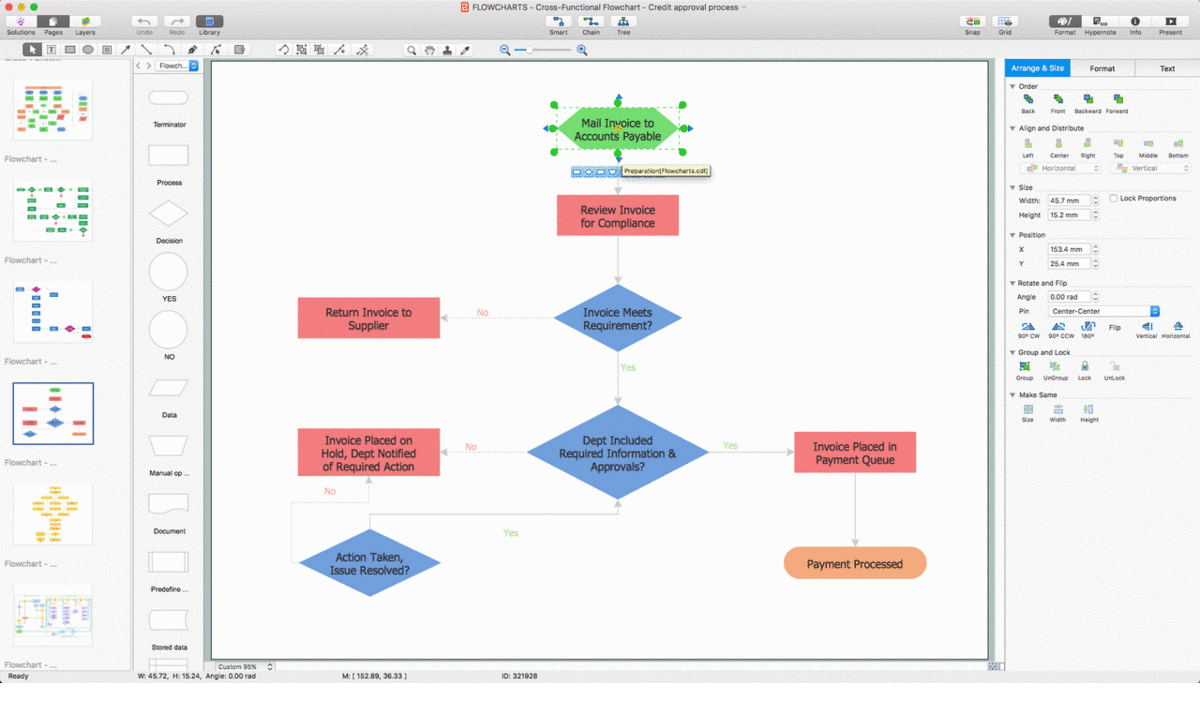Procedure is defined and kept in entire organization to ensure that identification and handling of NOK or suspected material is in place to avoid mixing with conform parts. CNC12 The standard defines the exit criteria of the alert production, logistic, maintenance. Alert process is defined on the basis of the severity level of non-conformity. To lay down a procedure for handling of non-conformances. 2.0 Scope This Standard Operating Procedure is applicable for handling of non-conformances associated with product (s) manufactured at pharmaceutical formulation plants. Non-conformances observed in in-process products and Finished Products shall be handled through this SOP.
A non-conformance (or 'nonconformity') means that something went wrong.

The non-conformance could be in a service, a product, a process, goods from a supplier, or in the management system itself. It occurs when something does not meet the specifications or requirements in some way. These requirements might be defined by the customer, a regulatory body, or in the internal procedures of the company.
Here are some examples:
Non Conformance Procedure Flowchart
- You manufacture steel plates with a hole of size 10mm, but on inspection the hole measures 9mm.
- You supplied product to a customer that was not the colour they ordered.
- As a labour hire company you sent a worker to a client without the correct induction.
- Your consulting office sent a report to a client that is missing a section of work
- Your testing company misplaced some client samples
- A supplier has sent you the wrong product
- Your batch records are missing temperature information and the supervisor's signature
- Sales staff are sending out an old version of a product specification sheet
- You shipped product to a customer but sent it to the wrong address
- Your help desk did not respond to a customer within the 24 hour response time target
These issues could be identified through customer complaints, internal audits, external audits, incoming material inspection, or simply during normal testing and inspection activities.
Nonconformity is addressed with corrective actions and they are both in the same clause in ISO 9001:2015 (10.2).
Non Conformance Procedure Sample
ISO 9001:2015 no longer requires a documented procedure, but you must still keep records ('retain documented information') of the nonconformity and what was done to correct it.

You must establish a process (documented or not) for how your organisation will deal with non-conformance and how you will keep records of what happened.
If you make and/or sell goods, then you also need to work out how to deal with nonconforming product. The highest priority is to stop nonconforming goods reaching the customer, but the sooner you detect a problem, the less it will cost you.
In establishing a process for dealing with nonconformity you'll need to decide:
- who will determine what immediate actions will be taken to correct the problem, and what kinds of actions should be taken. These immediate corrective actions can be seen as 'damage control' and need to:
- stop further non-conformance
- contain the effects and stop any further processing of defective items- e.g. quarantine
- assess the effects of the problem - how much, how bad, what to do (e.g. scrap / rework),
- notify affected customers, if necessary
- how reworked items should be checked (if it is different from normal inspection)
- how and where a non-conformance should be recorded
- what steps should be taken to identify any defective product released to a customer
- what, if any, concessions/discounts will be given to the customer
- how a decision will be made on whether further corrective action is necessary
A basic process for manufacturing might go something like this:1. All staff are responsible for reporting a nonconformity to their supervisor.1. Staff or supervisor must fill out Form-99. *1. Also add details to the NCR register and record the assigned NCR number on Form-99. *1. Check any previous production to ensure conformity. Follow recall process if any defective product was released to customers1. Move all affected goods to the designated quarantine area and attach a 'non-conforming goods' label1. Investigate the source of the problem and correct it before resuming production.1. Supervisor to determine what action should be taken with nonconforming goods - rework, scrap, etc,1. Supervisor to record decision on Form-99. *1. If the scheduled delivery date will be affected, inform the customer1. Reworked items will be checked as per normal inspection with doubled sampling rates1. See corrective action for more details on what else needs to happen to address a nonconformity, i.e. actions to investigate and eliminate the root cause(s).1. All corrective actions to be recorded on Form-99. *1. When root cause has been addressed and verification of effectiveness has been completed, manager to review and sign-off NCR as closed on NCR register. *1. Manager and supervisor to review NCR register on a monthly basis and followup outstanding tasks.
* Toolbox software eliminates the need for either form or register, since both are taken care of within the software. Toolbox gives you a process to follow AND a place to keep the records for both non-conformance and corrective action.

In Toolbox software, nonconformities are recorded as 'Issues'. The same process is used to manage customer complaints, supplier problems, audit findings, improvement requests, maintenance issues, document change requests, and any number of other issue types you'd like to configure. Have a look in our user guide to see how you would report a nonconformance, and what the corrective action process looks like in Toolbox.